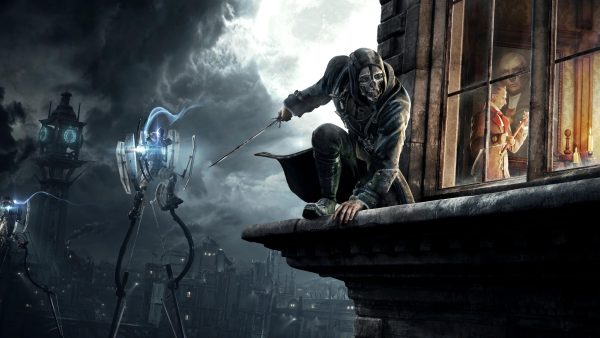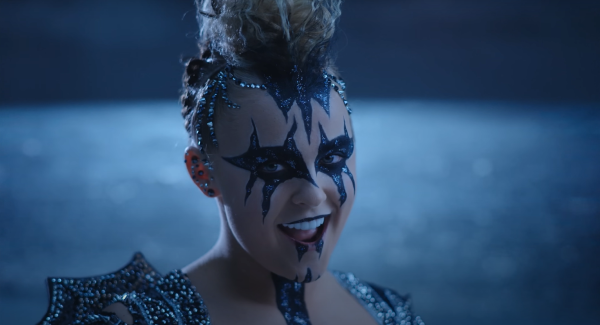Book Club
SJM, WYD? Part 2: Is he manipulative and abusive or just morally gray?

Photo by teri schmelzel
Former fans of popular YA high fantasy author Sarah J Maas voice their opinions on her controversial writing
Last week, we learned about one of the many controversies surrounding Sarah J Maas, a popular Young Adult author. Part 1 covered how Maas went about including POC characters in her debut series “Throne of Glass,” only to give them secondary roles and eventually kill them off.
But today, we will be shifting slightly, branching over to her other popular series, “A Court of Thorns and Roses,” published in 2015.
Buckle up, reader, because we will be focusing on the relationships developed within ACOTAR, specifically the romantic ones.
Oh goodie.
Is he manipulative and abusive or just morally gray?
Everybody loves the bad boy who constantly toes the line of the snarky, tortured soul and the absolute sociopath. If you don’t, I recommend you avoid Maas’ work because her’s are riddled with them.
One of the most prevalent characters in ACOTAR is Rhysand, High Lord of the Night Court.
Introduced to readers as the villain in book one of the current four-book series, Rhysand was, for lack of a better word, a real pain in the behind.
In a world divided into Courts — think of them as kingdoms or states — Rhysand is the ruler of one of the most brutal.
Geographically composed of mountainous terrain and home to the most Slytherin-esque citizens you’ve ever seen (no tea, no shade to any Slytherins reading this.), Rhysand rules with an iron fist as one of the most powerful High Lords in Prythian history.
He, of course, is described as devastatingly handsome with an equally impressive drive to flirt with Feyre, the series’s protagonist. And it’s here that things begin to get interesting.
Warning: Spoilers for “A Court of Thorns and Roses” beyond this point.
In a truly incredible turn of events, we find ourselves Under the Mountain with the seemingly impossible mission of completing the three tasks Amarantha, the real villain of this story, has set before Feyre to save Prythian.
And boy are they ruthless trials. Feyre breaks her arm during one of her trials, and her injury soon becomes infected, bringing her to the brink of death.
Lucky for Feyre, Rhysand is there to save the day.
Naturally.
Rhysand makes a deal with her saying he will not only heal her but help her complete Amarantha’s tasks if she agrees to spend two weeks with him at the Night Court every month for the rest of her life.
Bonkers, I know.
But Feyre agrees because, well, she’s dying and is desperate to save the love of her life, who is also being held captive by Amarantha. That’s right, reader. She already has a man who isn’t Rhysand.
These games Rhysand likes to play aren’t what readers have an issue with, though — it’s what comes after.
Part of his “help” involves him drugging her every night and dressing Feyre in a skimpy outfit for the nightly parties Amarantha puts on for her own entertainment.
Rhysand explains it’s to protect Feyre from the trauma and embarrassment she endures at the parties, but readers have a hard time trusting him so suddenly.
For three hundred pages, we are told Rhysand is dark and conniving; but, now we’re supposed to assume he won’t take advantage of Feyre when she’s at her most vulnerable? News flash, he already did!
As Rhysand’s character develops throughout the series and his relationship with Feyre gets flushed out more, we come to learn that his intentions were not as insidious as readers imagined.
However, readers aren’t thrilled over how Rhysand is considered to be this wonderful, feminist liberator because he gives Feyre choices, something she didn’t have much of before.
Because he does the bare minimum, both Feyre and readers are expected to excuse his previous actions because he’s actually a “good guy” beneath his brooding, leather-clad exterior.
In all honesty, I would be concerned if a young and impressionable girl, boy or non-binary baddie were to read these books and think this kind of relationship is okay, healthy and acceptable.
That being said, if you can recognize this as a high fantasy YA story following the civil unrest in faerie land and as something that is not to be adopted into your everyday life, you’ll probably be fine.
Maybe.
Come back next week for the third and final part of SJM, WYD? as we wrap up Maas’ scandal.
Schutte can be reached at [email protected]

Grace Schutte is a fourth-year creative writing and Spanish student. This is her fifth semester on staff, having previously served as a staff writer, Chief Copy Editor, a freelance writer, Currents Editor, and now as the OP/ED Editor. She is currently daydreaming about living softly. She is very content.










